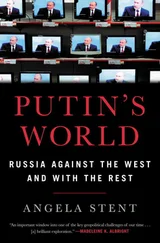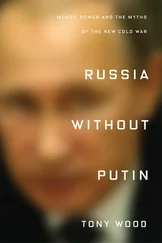From the court record:
“Why were violent means being used against you?”
“In all the interviews, all they were interested in was where Maskhadov was and where the submarine was that I supposedly was intending to hijack. Those were the two questions in connection with which violent means were used against me.”
Hasuhanov could not lead his questioners to Maskhadov because he had last seen him in 2000 and subsequently had contact with him only on audiocassettes. When necessary, Maskhadov would record one and send it to Hasuhanov by courier. Occasionally Hasuhanov would reply. One of the couriers had become an FSB informer. The last time before his arrest that Hasuhanov had received a cassette was in January 2002, and he had replied two days earlier. On the tapes, Maskhadov usually asked Hasuhanov, apparently for the record, to confirm how much money he, Maskhadov, had transferred to which field commanders. We shall see why Maskhadov was interested in this subject.
Let us turn to the submarine. Its story deserves to be told in some detail. As noted earlier, Hasuhanov had been a high-ranking submarine officer before retiring. He was the only Chechen who ever became an officer in the nuclear submarine fleet, in either Soviet or post-Soviet times. Accordingly, Lieutenant Colonel Cherepnev set about trying to incriminate him in the “planning of an IAF to hijack a nuclear submarine, gain possession of a nuclear warhead, seize Deputies of the State Duma as hostages, demand changes to the constitutional system of the Russian Federation by threatening to use a nuclear warhead and to kill hostages.” This is a quotation from a form returned by Cherepnev to the public prosecutor’s office in Chechnya with a request for permission to continue the detention of Hasuhanov. The request was not refused.
Cherepnev did his utmost to incriminate Hasuhanov, but the results were unspectacular. Hasuhanov would not, and indeed could not, give in. In 1992 he himself had “built,” as they say in the navy, the very submarine Cherepnev was accusing him of planning to hijack. Hasuhanov had monitored the submarine’s construction, knowing that he would be serving on it. Thus he had supervised the project on behalf of its future crew.
Cherepnev worked hard on the story of the submarine hijacking. The FSB forged documents supposedly written by Chechen fighters on the basis of intelligence supplied by Hasuhanov. There was a “Working Plan of Chechen IAFs for carrying out an act of sabotage on the territory of the Russian Federation and hand-drawn maps of the bases of 4 Nuclear Submarine Flotilla of the Pacific Fleet” and a “Plan for conducting a terrorist act on the territory of Russia.” There was a helpful note added to the effect that “detailed planning of the operation was carried out on the basis of visual and reconnaissance intelligence of the region of interest to us during December 1995.” It was under these words that Hasuhanov was meant to place his signature.
The trouble was, the authorities could not get him to sign. The FSB set about beating him more ingeniously, although there was little they hadn’t already tried. Now, however, they were punishing him for disrupting their plans.
The only things Cherepnev ever got Hasuhanov to sign (“endorse” was the term used in the verdict), out of his mind from a combination of pain and psychotropic drugs, were blank sheets of “orders and operational instructions of Maskhadov.” Cherepnev wrote in whatever it seemed would go down well. Here is an example of one such fabrication:
On September 2, 2000, Hasuhanov issued a combat instruction ordering all field commanders to scatter small nails, nuts, bolts, and ball bearings on highways and routes of deployment of federal forces in order to disguise mines and explosive devices. Thus, availing himself of his leading role in the IAF, by his deliberate actions Hasuhanov incited other participants of the IAF to commit terrorist acts directed at opposing the establishment of constitutional order on the territory of the Chechen Republic.
Cherepnev also demanded that Hasuhanov sign the minutes of his interrogations without reading them. Here is an example of their quality:
Question [supposedly asked by Cherepnev]: You have been shown a photocopy of an Address to Russian Officers, No. 215 of November 25, 2000. What testimony can you give? Answer [supposedly given by Hasuhanov]: The preparation and distribution of such documents was a component part of the propaganda carried out by the operational directorate of the armed forces of the Chechen Republic of Ichkeria under my immediate leadership. The Addresses referred to were intended to counteract the Russian mass media in respect of their coverage of the progress of the antiterrorist operation. I understood that distribution of such documents could lead to destabilization of the situation on the territory of the Chechen Republic, but continued my activities….
This document is typical of the army’s literary style. For a month Hasuhanov was tortured in Znamenskaya so that material of this caliber could be accumulated.
From the court record:
“And when as a result of these beatings I no longer understood or reacted to anything, I was given injections and transferred to the FSB in North Ossetia. They didn’t want to admit me to the interrogation unit there because their doctor said that, as a result of the earlier beatings, I would die within 48 hours. I was then taken to a timber mill, Enterprise No. YaN 68-1.”
“Were you given any medical assistance?”
“I just lay in the timber mill recovering for three months.”
What timber mill is this? Mention is occasionally made of it in stories about people who have vanished without a trace after purges in Chechnya. Some who have been there and survived call it a lumber camp, a term from Stalin’s times; others call it a timber mill. Its official title is Enterprise No. YaN 68—1, and it comes under the administration of the Ministry of Justice of the Republic of North Ossetia.
What we do know about the timber mill is that it is the destination of people who have been beaten half to death by officers of the law-enforcement agencies (primarily FSB agents). The enterprise closes its eyes to the fact that these individuals have no identification documents. They are nonpersons who have vanished without a trace after their encounter with the feds.
We owe a debt of gratitude to those who work at the timber mill for illegally accepting the outlawed into their enterprise. They have saved many from certain death: those who were supposed to die but whom the feds simply couldn’t be bothered to shoot as they were brought from Chechnya to Ossetia, and those who were sent to the mill to die without the FSB getting its hands dirty. Nobody knows how many people have died there in the course of the second Chechen war or who they were. They have left behind not so much as a grave mound. On the other hand, we do know how many survived. Hasuhanov is one of these. A guard took pity on him, no more than that, and every time the man was on duty he would bring Hasuhanov milk from his home.
Hasuhanov thus survived yet again, and yet again found himself facing Cherepnev. In the Chechen directorate of the FSB, there is a rule that anyone who survives interrogation is put on trial. Not many do, and hence trials of “international terrorists” are few and far between. Nevertheless, for the sake of expediency, at least, some trials are held: within the antiterrorist operation, it is thought desirable to sentence the occasional “terrorist.” Western leaders ask Putin questions from time to time; he demands information from the FSB and the prosecutor general’s office, and they do their best to oblige. Only, of course, when someone survives.
Vladikavkaz
Vladikavkaz is the capital of the republic of North Ossetia—Alaniya, which borders on Chechnya and Ingushetia. Ossetia, too, is a fully paid-up member of the antiterrorist operation. Mozdok, in North Ossetia, is the main military base where federal groups are formed before being sent to Chechnya. It was the scene of two major suicide bombings in 2003: on June 5 a woman got on a bus transporting military pilots and blew herself up and on August 1 a man crashed a truck loaded with a ton of explosives into a military hospital.
Читать дальше
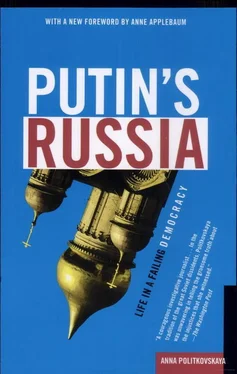

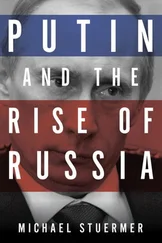
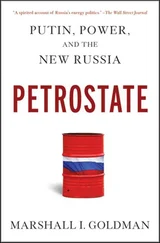
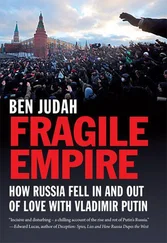
![Stephan Orth - Behind Putin's Curtain - Friendships and Misadventures Inside Russia [aka Couchsurfing in Russia]](/books/415210/stephan-orth-behind-putin-s-curtain-friendships-a-thumb.webp)
